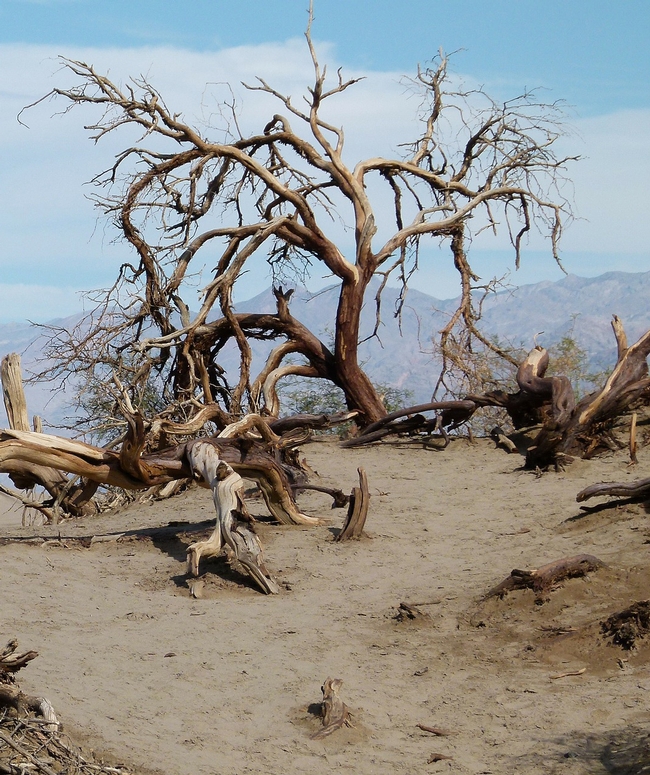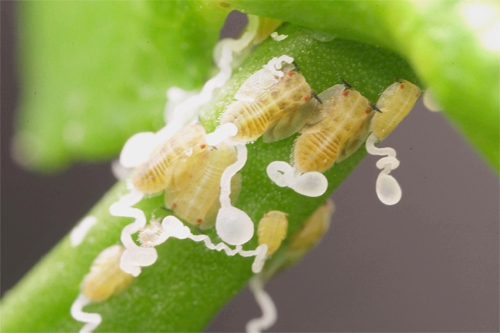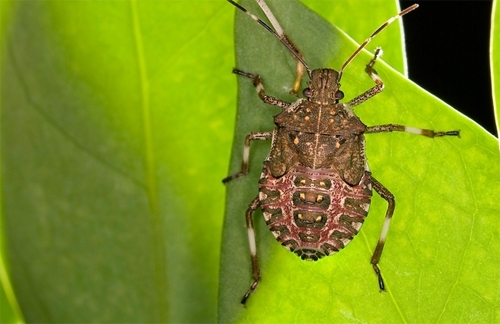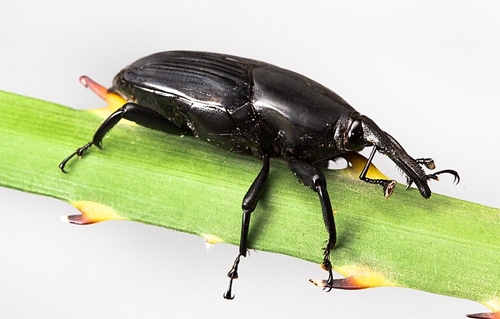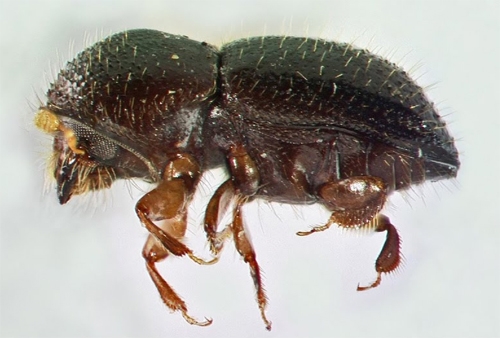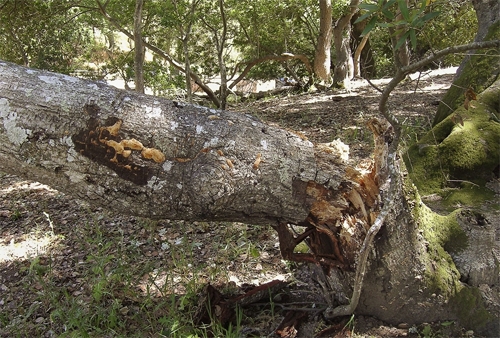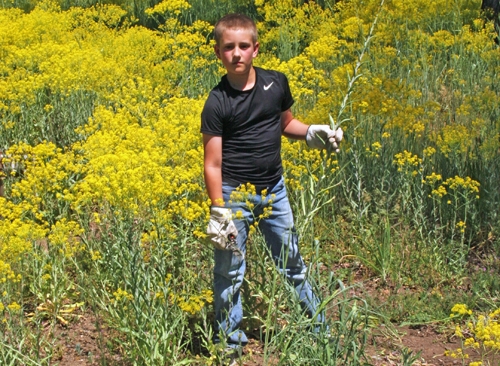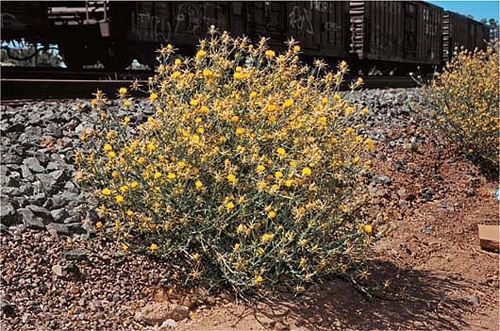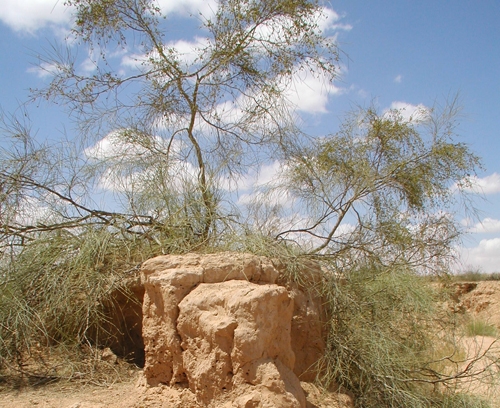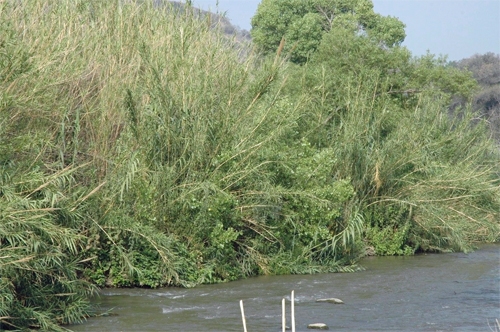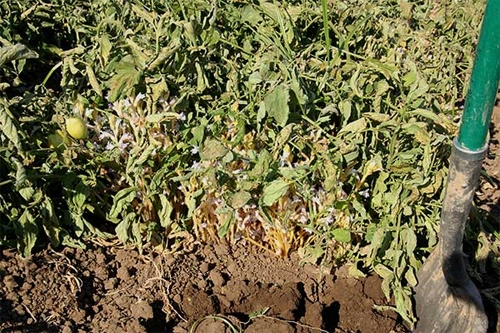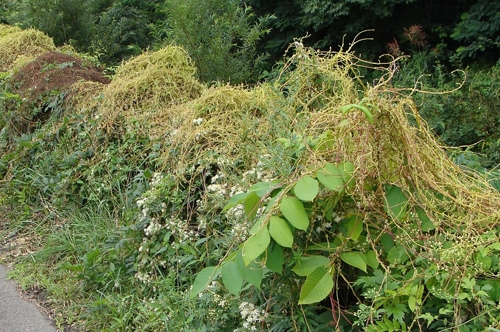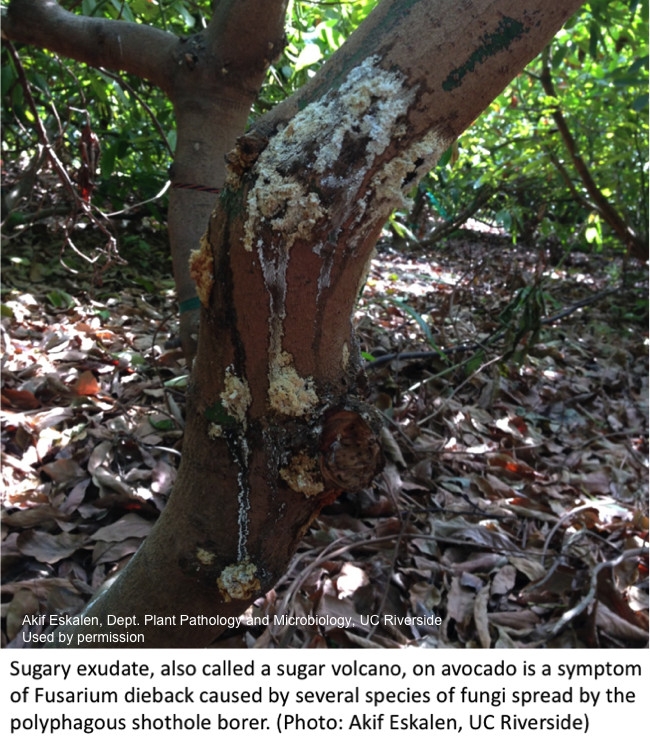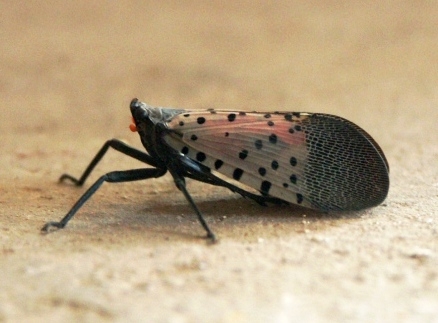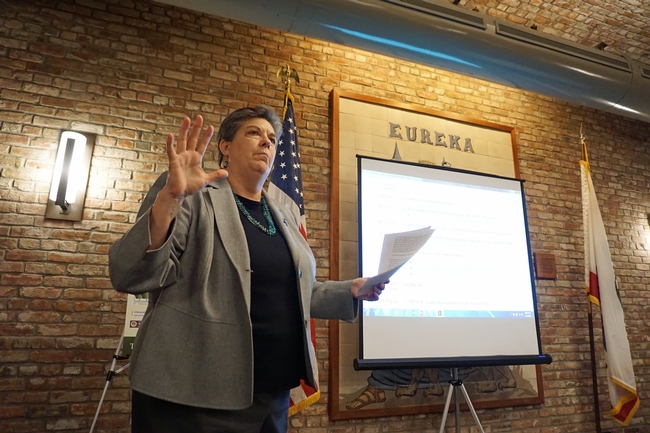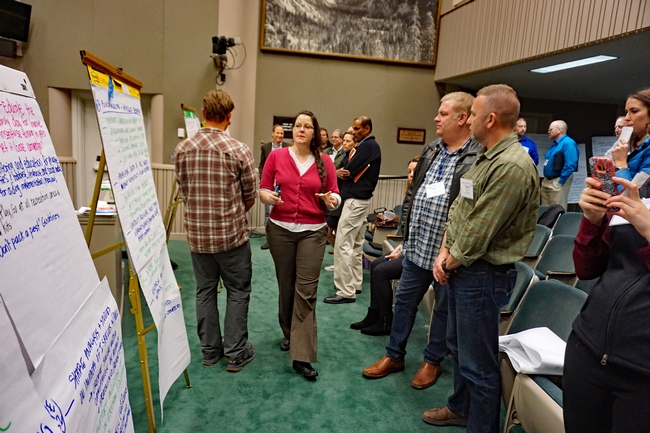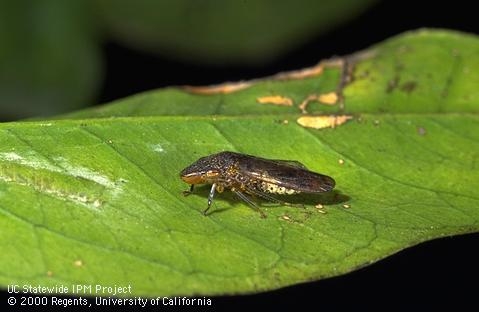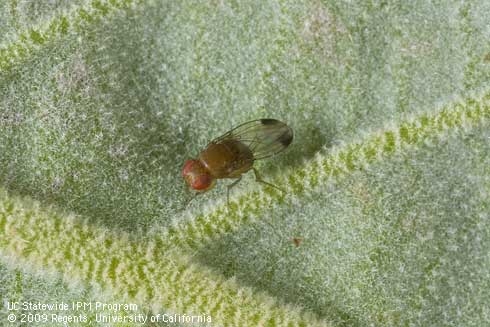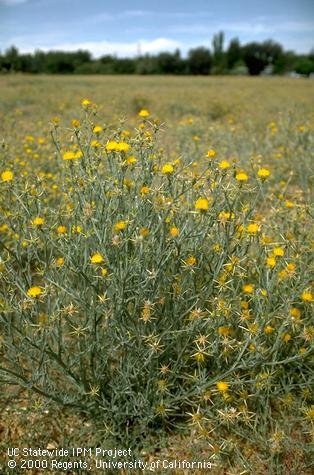Posts Tagged: invasive species
Invasive species threaten California’s economy and ecology
When insects, weeds, animals and diseases enter California from elsewhere in the nation or world, they can cause economic losses to agricultural crops and ecological damage to the state's natural areas. Ultimately, invasive species affect every resident of California.
Based on historical data, a new invertebrate species establishes itself in California about every six weeks, on average. They don't all become serious pest problems, but many evade eradication efforts, disrupt carefully balanced integrated pest management programs, hijack sensitive ecosystems, and spoil valued recreational resources and urban landscapes.
UC Agriculture and Natural Resources joins the California Department of Fish and Wildlife and the California Invasive Species Council in marking California Invasive Species Action Week, June 1-9, to raise public awareness of invasive species issues and promote public participation in the fight against California invasive species.
The UC Integrated Pest Management Program and the Center for Invasive Species Research are two UC ANR programs that monitor invasive species and coordinate responses when they become established in the state. They work closely with UC ANR advisors and specialists on eradication, management and prevention of these threats.
| Asian citrus psyllid and huanglongbing
Huanglongbing disease, which kills citrus trees, is spreading in Southern California residential areas and threatening commercial citrus production. There is currently no cure for the huanglongbing disease. It is spread by the Asian citrus psyllid. The insect, a native of Pakistan, Afghanistan and other Asian regions, was first detected in California in 2008. Currently the only way to control the disease is to reduce the psyllid population and to remove trees that are infected or located near the infected trees. Everywhere ACP is found, the pests find and spread HLB. In California, an aggressive push to keep psyllid populations low, regulations to limit the spread of psyllids when trucking the fruit, and active scouting for and removal of HLB-infected trees in residential areas could buy time for researchers to find a solution before California suffers the fate of Florida citrus growers, whose orange production has dropped 70% lower than 20 years ago. More info: ACP/HLB distribution and management |
|
| Brown marmorated stink bug
The first reproducing population of brown marmorated stink bug was found in Los Angeles County in 2006. In 2013, a large population was detected in a midtown Sacramento. A pest of agricultural crops and a serious residential problem, it is a strong flier and also travels long distances by hitching rides in vehicles or inside furniture or other articles when they are moved, often in late summer and early fall. As a result, new infestations pop up in neighborhoods where people travel from infested areas. A native of China, Japan and Korea, BMSB was first documented in the United States in Pennsylvania in 2001. It is either established or found occasionally in about 41 states. More info: Pests in Gardens and Landscapes - Brown marmorated stink bug |
|
|
South American palm weevil The South American palm weevil is a destructive pest in its native and invaded ranges. Scientists first found it in San Diego in 2011. As the weevils feed, they drill through the heart of the palm, eventually choking off the fronds and killing the tree. UC ANR is studying the South American palm weevil's biology and life cycle, and trying to find out how they got to California. Traps for monitoring the pest have been developed and deployed. More info: South American palm weevil invasion in San Diego County |
|
|
Polyphagus shot hole borer The insect, originally from Asia, was first identified in California in 2012. Shot hole borers bore through bark carrying with them harmful fungus. The fungus attacks the tree's vascular tissue, choking off water, causing branch dieback and eventually killing the tree. Polyphagous shot hole borer and the fungus are now distributed widely in more than 110 types of trees in Los Angeles and Orange counties, and have been observed in San Bernardino, Riverside and San Diego counties. More info: Invasive shot hole borers |
|
|
Sudden oak death Sudden oak death is caused by the pathogen Phytophthora ramorum, which was inadvertently introduced to California forests on nursery stock in the 1990s. The disease has killed up to 50 million trees (primarily tanoak, coast live oak, California black oak, Shreve's oak and canyon live oak) from Big Sur to southwest Oregon. More info: http://www.suddenoakdeath.org |
|
|
Dyer's woad Dyer's woad is an invasive weed thought to have been introduced into California in the Scott Valley of Siskiyou County, where it is locally referred to as "Marlahan mustard." Until a couple of decades ago, it was primarily confined to Scott Valley, but it has subsequently spilled over into Shasta Valley. It continues to spread throughout Siskiyou County and into Modoc, Shasta and other northern California counties. During medieval times, Dyer's woad was one of the most valuable plant commodities in Europe, cultivated as a source of blue dye as early as the 13th century. Colonists first introduced it to the eastern United States for that purpose. UC ANR researchers are developing management practices for removing Dyer's woad and using solarization to kill the seeds in the field, limiting the risk of seed being spread when dead weeds are removed for disposal. More info: UC IPM Pest Note on Dyer's Woad |
|
|
Yellow starthistle Yellow starthistle is native to Eurasia and was introduced to California around 1850 via South America. Recent reports indicate that yellow starthistle infests between 10 and 15 million acres in California. It is common in open areas on roadsides, rangeland, wildlands, hay fields and pastures. Disturbances created by cultivation, poorly timed mowing, road building and maintenance, or overgrazing favor this rapid colonizer. It forms dense infestations and rapidly depletes soil moisture, preventing the establishment of other species. It is also poisonous to horses, causing a nervous disorder called “chewing disease,” which is fatal once symptoms develop. Horses are the only animal known to be affected in this manner and should not be allowed to graze on yellow starthistle. More info: UC IPM Pest Note on yellow starthistle |
|
|
Saltcedar Saltcedar is native to Eurasia and was introduced into California through the nursery industry. The weed is tolerant of high salinity. Saltcedar's dry branches and leaves can increase fire frequency. After fires, saltcedar sprouts rigorously, while native trees and shrubs generally do not, enabling saltcedar groves to push out native species. Research shows that saltcedar could impact the structure and dynamics of streams by trapping and stabilizing sediments, increasing overbank flooding following high flow events and creating permanent sand bars in rivers. This pest also contributes to the decline of wetland communities as habitat refuge for wildlife. More info: Center for Invasive Species Research |
|
|
Arundo donax Arundo donax is native to the Mediterranean and tropical Asia. In California from the late 1700s to early 1800s, giant reed was often planted for erosion control in flood channels and as wind breaks. The bamboo-like perennial can grow to 25 feet tall with thick, well-developed rhizomes. It develops dense stands that displace native vegetation, diminish wildlife habitat, increase flooding and siltation in natural areas and create a wildfire hazard. More info: Arundo donax |
|
|
Egyptian broomrape |
|
|
Japanese dodder There are several species of dodder native to California, but they are not as difficult to manage as Japanese dodder, which was identified in Shasta and Yuba counties in 2005. This invasive plant pest has thick stems that resemble spaghetti. It grows larger and faster than native dodders and can cover entire trees or shrubs. In California, no viable seeds have been observed following Japanese dodder flowering. Instead, most spread occurs through the dissemination of small pieces of stems distributed by birds and other animals or through pruning, composting, and the improper disposal of infested plant material. This weed is has spread to more than a dozen California counties including Alameda, Butte, Contra Costa, Fresno, Los Angeles, Merced, Sacramento, Shasta, Solano, Sutter, Tulare, Yolo, and Yuba. Contact your county agricultural commissioner to receive proper identification and help with control. More info: UC IPM
|
Find more information on the UC Integrated Pest Management Program Invasive and Exotic Pests website: https://www2.ipm.ucanr.edu/Invasive-and-Exotic-Pests/
During California Invasive Species Action Week, learn about invasive species
Californians can help in the fight against invasive species by learning and participating during California Invasive Species Action Week, June 2–10.
During the week, the UC Statewide Integrated Pest Management Program invites the public to spend lunch learning about invasive tree killing pests, aquatic nasties like quagga mussels and nutria, and how the invasive weed/wildfire cycle is altering our ecosystems. http://ucanr.edu/sites/invasivelunch/
The invasive species killing trees is causing sugar volcanoes to erupt on avocado trunks and branches that might be infected with Fusarium dieback. Fusarium dieback is a invasive, beetle-vectored disease that causes damage on avocado and more than 39 other tree species. The disease has spread in urban forests and wild lands in the Los Angeles basin since early 2012, and in Orange and San Diego counties since early 2013 and Ventura County in 2015.
The symptoms — staining, sugary exudate, gumming and beetle frass — are often noticed before the tiny beetles (1.5–2.5 mm) are found.
As its name suggests, these beetles bore into trees. Near or beneath the symptoms, you might notice the beetle's entry and exit holes into the tree. The female tunnels into trees forming galleries, where she lays her eggs. Once grown, the sibling beetles mate with each other so that females leaving the tree to start their own galleries are already pregnant. Males do not fly and stay in the host tree.
Shothole borers have a special structure in their mouth where they carry two or three kinds of their own novel symbiotic fungi. Shothole borers grow these fungi in their tree galleries. It's these fungi that cause Fusarium dieback disease, which interrupts the transportation of water and nutrients in the host tree. Advanced fungal infections will eventually lead to branch dieback.
Early detection of infestations and removal of the infested branches will help reduce beetle numbers and therefore, also reduce the spread of the fungus.
- Chip infested wood onsite to one inch in size or smaller. If the branch is too large to chip, solarize them under a clear tarp for several months
- Avoid movement of infested firewood and chipping material out of infested area
Avocado is one tree host. Shothole borers successfully lay eggs and grow fungi in many tree hosts, with some of these trees susceptible to the Fusarium dieback disease. For more information about tree host species, where the shothole borer is in California, and what symptoms look like in other tree hosts, visit the UC Riverside Eskalen Lab website or the Invasive Shot Hole Borers website.
Content in this post taken from the UC IPM Avocado Pest Management Guidelines. Faber BA, Willen CA, Eskalen A, Morse JG, Hanson B, Hoddle MS. Revised continuously. UC IPM Pest Management Guidelines Avocado. UC ANR Publication 3436. Oakland, CA.
Invasive pest takes up residence in the Northeast
The spotted lanternfly, native to Asia, first came to America in 2014 when it was found in Pennsylvania. Despite a quarantine, populations have been discovered in New York, Delaware and Virginia, reported Zach Montague in the New York Times.
“They've been appearing in grapes, and we have reports from growers last year of a 90 percent loss,” said Julie Urban, a senior research associate at Penn State.
The reporter also contacted UC Cooperative Extension advisor Surendra Dara, who published an article in 2014 about spotted lanternfly in Pest News, a UC Agriculture and Natural Resources eJournal about endemic and invasive pests in California.
"The Pennsylvania Department of Agriculture recently reported the first detection of yet another invasive hemipteran pest in the U.S.," Dara wrote in his article. "While efforts to have a good grip over other invasive hemipterans like the Asian citrus psyllid, the Bagrada bug, and the brown marmorated stink bug are still underway, there is a new pest that could potentially impact industries ranging from lumber to wine."
Dara told Times' reporter that lanternfly has the unusual ability to lay eggs on almost any surface — plants and soil as well as wheel wells, train cars and shipping containers.
“Most pests deposit their eggs on their host plant, or very close, so they already have food available,” Dara said. “Those that have the advantage of being able to lay eggs on non-plant material obviously have a better chance of surviving and spreading."
Ag leaders, scientists set priorities to prevent invasive pest threats to the environment and economy
The gypsy moth, an interloper from Europe and Asia, is threatening California's majestic oaks in Ventura County.
Invasive desert knapweed, which comes from Africa, has made its first North American appearance in in California's Anza-Borrego Desert, where it has started to crowd out native plants.
Asian citrus psyllids are slowly spreading the devastating huanglongbing disease in Southern California citrus.
River rats from South America, called nutrias, are munching voraciously on wetland plants in some areas of Stanislaus, Merced and Fresno counties.
These are just a few of the insects, weeds, animals and diseases that have entered the state of California from elsewhere on the globe, causing tremendous ecological damage and huge economic losses to agricultural crops, which ultimately affect every resident of California.
Based on historical data, a new invertebrate species establishes itself in California about every six weeks, on average. They don't all become serious pest problems, but many evade eradication efforts, disrupt carefully balanced integrated pest management programs, hijack sensitive ecosystems, and spoil valued recreational resources and urban landscapes.
A diverse group of university scientists, federal and state government representatives, county agricultural commissioners and non-profit organization leaders who are battling these pests converged at a summit in the state capitol Jan. 11 and 12 to coordinate their efforts, pool intellectual resources, and plot a strategy for protecting agricultural crops, natural resources, unique ecological communities, cityscapes and residential neighborhoods.
“We are a big, beautiful, special place, blessed with great weather and diverse geography,” said California Department of Food and Agriculture Secretary Karen Ross at the summit. “That means a lot to our many visitors – including pests.”
Glenda Humiston, vice president of UC Agriculture and Natural Resources, which co-sponsored the summit, outlined the goals.
“We know that collectively, we have the tools and expertise to prevent invasive species from entering California, spreading and becoming established,” Humiston said. “I am so pleased with the numbers of people here today, and the expertise that you bring.”
A fundamental component of the fight against damaging invasive species is research, Humiston said, adding that the European grapevine moth in an apt example. The pest was detected in California's wine country in 2009, and later found as far south as Fresno County. A multi-agency collaboration responded quickly.
UC ANR academics studied the moth's biology, life cycle, host range and proven management practices. They developed a pest management program that relied on mating disruption with pheromones and application of carefully timed insecticides. In short order, the moth population plummeted, and the state was declared free of European grapevine moth, lifting a quarantine, enhancing farmers' ability to export its product, and preserving the communities' economic wellbeing.
“This multi-agency collaboration contributed to a successful, science-based response plan to a serious pest threat,” Humiston said.
She noted, however, that prevention is the best option.
“This is critical,” Humiston said. “Once the pests are here, they cost us millions upon millions of dollars to manage, not to mention the devastation and destruction inflicted on our crops, natural resources and the damage to local economies.”
In 2010, CDFA created a strategic framework for addressing California's ongoing invasive pest problems and potential future introductions. Successful implementation of the framework requires partnerships involving government from the state to local levels, the agriculture industry and commodity groups, non-governmental organizations committed to the environment, and researchers at UC and other universities.
UC Cooperative Extension advisor emeritus John Kabashima was instrumental in bringing the summit to fruition. Kabashima, who retired in 2015, continues to lead a battle against invasive shot hole borer pests in Southern California. The insects, originally from Asia, are killing thousands of Southern California trees, and have the potential to kill millions of trees in urban areas, natural areas and even on farms in parts of the state as far north as Sacramento.
“We convened this meeting to bring together experts in the field and people who are feeling the impacts,” Kabashima said. “We're trying to start a 21st century invasive pest program that would then be implemented and funded to address the urgent issues before they cause any more devastation.”
At the end of the two-day summit, the participants voted to decide the most pressing issues and best strategies to take forward to their agencies, coalitions, research groups, legislators and constituents. Key strategies that emerged were:
- Analyze the economic impacts of invasive species management and the cost of “doing nothing.”
- Develop and maintain statewide surveys and map high-risk surveys.
- Increase funding to study invasive species' biology.
- Create a standing rapid response workgroup to guide response to new invasive species. Fund a rapid response emergency fund.
- Enact regulations to control high-risk vectors, such as soil, green waste, gravel, forage, straw and firewood.
- Formalize the Invasive Species Council of California (ISCC) and the California Invasive Species Advisory Committee (CISAC).
Mark Hoddle, UC Cooperative Extension biological control specialist and director of the Center for Invasive Species Research at UC Riverside, said the summit was a valuable part of the ongoing battle against invasive pests.
“It's good to see the number of agencies and organizations involved with invasive species issues,” Hoddle said. “I'm impressed with the energy in coming up with these priority lists.”
Summit outcomes will include sending recommended action items to the Legislature for funding consideration.
“Without financial support, many of the management tools that prevent unwanted incursions, find and monitor incipient pest populations, and develop sustainable, cost-effective management programs won't be possible,” Hoddle said.
View Glenda Humiston's opening remarks here:
National Invasive Species Awareness week: Feb. 27 – March 3, 2017
Invasive species are plants, animals, fungi or microbes that are not native to an area, but can quickly establish, multiply and become pests. These species can hurt the environment, agricultural production and even human health in some instances (e.g. the mosquito Aedes aegypti). According to the USDA, invasive species are responsible for $137 billion per year in economic losses in the United States.
In agricultural systems, invasive species may reduce yields, render crops unmarketable, or make rangeland unfavorable to livestock. In natural areas, they may squeeze out native species, change soil quality, and increase the frequency or intensity of wildfires.
Some of these species have been introduced intentionally (e.g., yellow sweetclover, which was originally imported from Europe as a forage species for livestock), while others arrived by accident (e.g., the glassy-winged sharpshooter which came to California inadvertently through nursery stock shipments).
Just one species can be detrimental to crop production and revenues. The invasion of spotted-wing drosophila, for example, caused conventional raspberry growers in California to lose $36.4 million in revenue between 2009 and 2014, and would have reduced California raspberry yields by as much as 50 percent without control efforts.
The spread of invasive pests has become more prevalent in recent decades, and is linked to several factors, including global travel, produce trade and climate change. Many invasive pests spread by human movement — medusahead, for example, has long awns on its seeds that easily attach to clothing and animal fur, to be carried to other locations. A recent study by UC scientists also determined that due to climate change, invasive weeds are shifting their ranges at a faster rate than native plants, and will likely cause more problems in agriculture and natural resources in the future. The yellow starthistle, an invasive plant that dries out soil and degrades rangelands, is one of the pests that will expand its range further north in California (and beyond) due to climate change.
While invasive pests can be a major challenge to growers and land managers, there are successful stories of stopping exotic pest invasions with well-coordinated eradication efforts. Recently, the California Department of Food and Agriculture (CDFA) declared the European grapevine moth eradicated from California after no moths were found in the state from 2015 to 2016. This was due to a rapid response, largely by UC Cooperative Extension scientists after the moth was discovered in Napa vineyards in 2008.
Here's what you can do to keep from introducing or spreading invasive species:
- Fully cooperate with agricultural inspections at the California state border and in your fields. When coming into California from another state, declare any plant or animal material that you have in your vehicle. Inspectors will thoroughly examine your materials or crops to make sure that they do not hold any invasive pests. This greatly reduces the chance that your activities will spread harmful invasive species.
- Check and clean your clothes, shoes, and equipment before you move from one location to another. For example, thoroughly cleaning your shoes with water and a disinfectant after hiking through an area known to have sudden oak death will prevent you from tracking the pathogen into uncontaminated areas. Similarly, checking your clothes or shoes for weed seeds before leaving an area will keep you from spreading invasive weeds.
- “Burn it where you buy it.” Burn firewood in the same place you purchased it, rather than buying it and transporting it elsewhere. If you must transport firewood, be sure to declare it at the border and have it inspected, as described above.
- Report invasive pests in your area. CDFA has a tool for reporting pests, but you can also contact your agricultural commissioner or UC Cooperative Extension to do so.
To learn more about invasive species, visit the UC IPM website. You will find a list of invasive insects, plants, diseases, and vertebrates in California, as well as links to other organizations and regulatory agencies that are also working to reduce their numbers.


